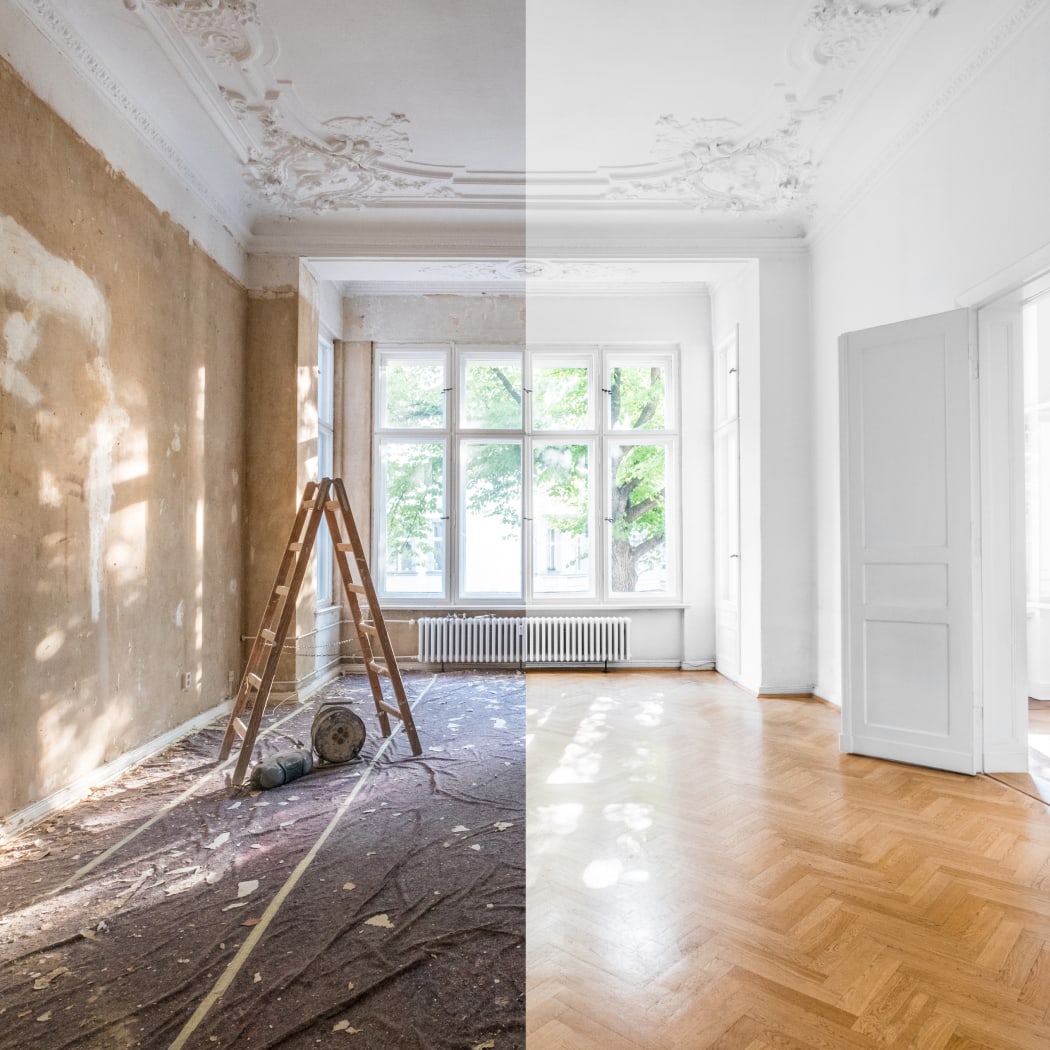Flooding is one of the most devastating events a property can endure. Whether it’s caused by severe weather, burst pipes, or an overflowing appliance, floodwater can lead to widespread structural damage, health hazards, and long-term property issues. When disaster strikes, professional flood damage restoration is essential to restore safety, salvage belongings, and return your property to a livable condition as quickly as possible.
Timely action can significantly reduce the extent of the damage and prevent complications like mold growth and rot. That’s why experienced restoration services are a critical part of your flood recovery plan.
What Is Flood Damage Restoration?
Flood damage restoration is the process of cleaning, drying, repairing, and restoring a property after it has been affected by significant water intrusion. Unlike small leaks or minor water damage, flooding can quickly overwhelm building materials, compromise structural safety, and create an environment ripe for bacteria and mold growth.
Flood restoration specialists use professional-grade equipment and techniques to:
-
Extract standing water
-
Dry out structures and materials
-
Disinfect affected areas
-
Remove unsalvageable materials
-
Restore walls, floors, and fixtures
-
Eliminate odors and prevent mold
The goal is to return your home or commercial space to its original — or better — condition.
Common Causes of Flooding in Properties
Flooding can occur in any property, often with little warning. Common causes include:
-
Heavy rain or stormwater runoff
-
River or coastal flooding
-
Blocked or overwhelmed drains
-
Burst water mains or internal plumbing failures
-
Sewage backups
-
Malfunctioning appliances (e.g., dishwashers, washing machines)
-
Basement flooding due to poor drainage or rising groundwater
Regardless of the source, every flood situation requires a tailored flood damage restoration approach.
Why Immediate Response Is Crucial
Flood damage worsens with time. Within hours, water seeps deep into flooring, drywall, and insulation. Left unaddressed, this can result in:
-
Mold and mildew growth within 24–48 hours
-
Rotting of timber and structural supports
-
Swelling and warping of floors and cabinetry
-
Electrical hazards
-
Uninhabitable or unsafe living conditions
A fast response from trained flood restoration specialists can help mitigate these issues, reducing repair costs and recovery time.
The Flood Damage Restoration Process
Professional flood damage restoration involves several steps to ensure thorough cleanup and restoration:
1. Emergency Response and Assessment
Specialists begin with a site inspection to determine the source and extent of the flooding. Safety checks for electrical hazards, structural issues, and contamination are performed immediately.
2. Water Extraction
High-powered pumps and vacuums are used to remove standing water quickly from floors, basements, and affected rooms.
3. Drying and Dehumidification
Industrial-strength air movers and dehumidifiers are deployed to remove moisture from walls, floors, and air. Moisture meters monitor progress and ensure complete drying.
4. Cleaning and Disinfection
Floodwater often contains harmful bacteria, chemicals, or sewage. Disinfection is critical to prevent health risks. Surfaces are cleaned and treated with antimicrobial agents.
5. Mold Prevention and Treatment
If mold is present, remediation begins immediately. Affected areas are cleaned or removed, and air is treated to kill spores and prevent further growth.
6. Repairs and Restoration
Once clean and dry, the restoration team repairs or replaces damaged drywall, flooring, ceilings, and fixtures. Your property is restored to pre-flood condition, ready for re-occupation.
Dealing with Contaminated Water
Floodwater is classified into three categories, which guide the restoration response:
-
Category 1 (Clean Water): From burst pipes or appliances. Low risk.
-
Category 2 (Grey Water): Contains mild contaminants, such as water from washing machines or dishwashers.
-
Category 3 (Black Water): Highly contaminated. Includes sewage, floodwater from rivers, or seawater. Requires specialized cleaning and full protective measures.
A professional flood damage restoration team will identify the water category and apply the appropriate safety and cleaning protocols.
Residential and Commercial Flood Damage Restoration
Whether you’re a homeowner or a business owner, flooding can be a major setback. Residential flood restoration focuses on:
-
Protecting personal belongings
-
Restoring comfort and safety for occupants
-
Coordinating with insurance for coverage and claims
Commercial flood restoration often includes:
-
Minimizing business interruption
-
Restoring compliance with health and safety regulations
-
Managing large-scale drying and reconstruction projects
Experienced flood restoration professionals can handle projects of any size and complexity.
Insurance and Flood Damage Claims
Most buildings insurance policies cover accidental flooding — but not all flood scenarios are treated equally. Working with a flood damage restoration team experienced in insurance work can help by:
-
Providing detailed damage reports
-
Documenting affected areas and items
-
Offering guidance on claim submission
-
Communicating directly with insurers or loss adjusters
Quick action, thorough documentation, and expert support will help maximize your insurance payout and speed up the claims process.
Tips to Prevent Future Flood Damage
While some flooding is unavoidable, proactive steps can reduce your risk:
-
Install sump pumps in basements
-
Clear gutters and drains regularly
-
Elevate appliances and electricals in flood-prone areas
-
Seal foundation cracks and waterproof basements
-
Use backflow valves on plumbing systems
-
Monitor local flood warnings and weather alerts
Preventative maintenance is an essential part of protecting your property from recurring flood issues.
Why Choose a Professional Flood Restoration Service?
Attempting DIY cleanup after flooding can be dangerous and ineffective. Professional flood damage restoration teams offer:
-
Fast emergency response
-
Specialized drying and dehumidification equipment
-
Full mold remediation services
-
Safe removal of contaminated materials
-
Structural assessments and professional repairs
-
Peace of mind that your property is safe and fully restored
By hiring experts, you reduce risk, save time, and protect your investment.
Final Thoughts
Flood damage is overwhelming — but with professional flood damage restoration, recovery is not only possible but efficient and thorough. Whether you’re dealing with storm damage, burst pipes, or a flooded basement, trained restoration teams are ready to respond 24/7.
Don’t let flood damage threaten your property’s safety, value, or livability. Act fast, trust the experts, and restore your home or business with confidence.









